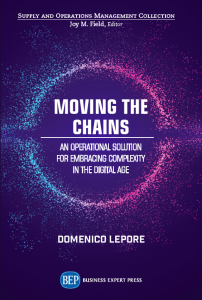
We live in such astonishingly uncertain times. So let’s do something that’s good for our mental and emotional health and lend some attention to an aspect of management that’s grounded in science and related to predictability. This is strongly connected with our previous post about Dr. W. Edwards Deming, the father of Quality and the man who helped Japan after WW II to become such a formidable economic player because they listened to what he had to say and put it into practice.
If change is the norm, how can we talk about predictability?
There would be no life without change. Change is a constant in nature that is not only necessary but literally vital. How does this intrinsic characteristic of nature affect the activities of an organization? By definition, an organization is a system. We can paraphrase Deming and define a system as a set of interdependent people and activities that work together to achieve a well-defined goal.
Each of the activities that make up the organization and every person is affected by variation. What do we mean by that? Variation means that no matter how hard we try, no two identical actions can generate exactly the same result. And this variation influences the possibility of achieving the goal.
Fortunately, there is a precise method for understanding and managing variation, whatever it affects – production, incoming cash, how a service is delivered. This effort to understand and manage variation is at the heart of Continuous Improvement and Continuous Improvement has a necessary condition for any organization to compete and thrive. The reason we want to understand and reduce variation is because we want to bring our processes into a state of statistical control. This is what gives us precious insight into predictability. When a process is statically in control then we can predict how it is going to behave in the future. On the flip side, if a process is out of control, then no matter how well things see m to be doing today, we have absolutely no clue about what might happen tomorrow. Let me repeat that. No clue. That should make it obvious why it is vitally important to understand and reduce variation in our processes.
Beyond technique
If we fall into the trap of thinking that understanding and managing variation is just about producing quality goods and services, then we might be tempted to confine it within a “silo” or “Quality department”. That would be a very serious mistake. Unless we have a profound understanding of how our processes behave we cannot make meaningful decisions. If we do not understand the variation of processes, we cannot assess how our actions to improve things impact other parts of the system. We always have to remember that the processes that make up a system are interdependent. We can achieve maximum Quality through minimum variation in processes.
There is indeed a method for doing this and it is relatively straightforward. It’s called Statistical Process Control. But it is not a technique. As Dr. Deming used to say, SPC is not simply a technique but a way of thinking. It is a mindset.
Two kinds of variation
Let’s remember that every process in our organization is affected by variation and it is of fundamental importance to understand what kind of variation is affecting them because there are two kinds.
While every process displays variation, some processes display controlled variation, while others display uncontrolled variation. Controlled variation is variation that is stable and consistent over time. It is due to common causes, causes which are intrinsically part of the process. A variation which is controlled makes the process predictable. But uncontrolled variation is not consistent over time. It is due to special causes, causes which are external to the process.
We must absolutely understand what kind of variation is affecting the process we are examining. If the variation is uncontrolled, then our ability to predict will be seriously undermined, and so too will our capacity to manage.
We can say that a process is in control when, through the use of past experience, we can predict, at least within limits, how it may be expected to vary in the future. Failing to identify the source of variation, special or common, leads to taking inappropriate actions on the system that may worsen the situation. Deming called that tampering with the system.
We have written extensively about variation and how to understand and manage it on this website and in our books. Whatever your business and whatever the size of your company, you cannot afford to ignore this fundamental element of management science. Indeed, your very future may depend on it.






Leave a Reply